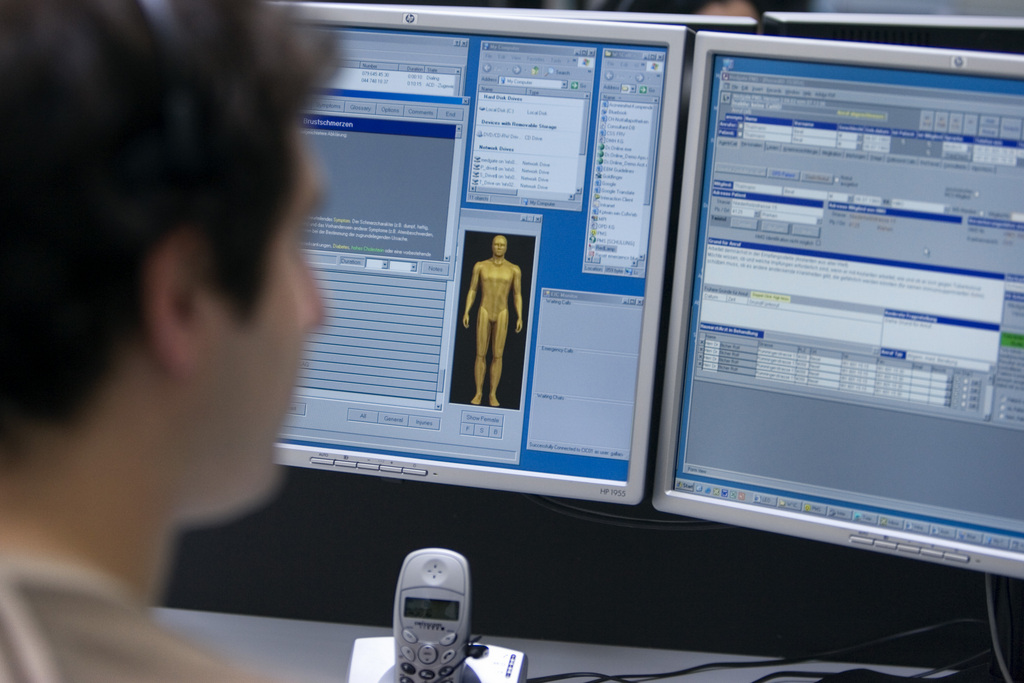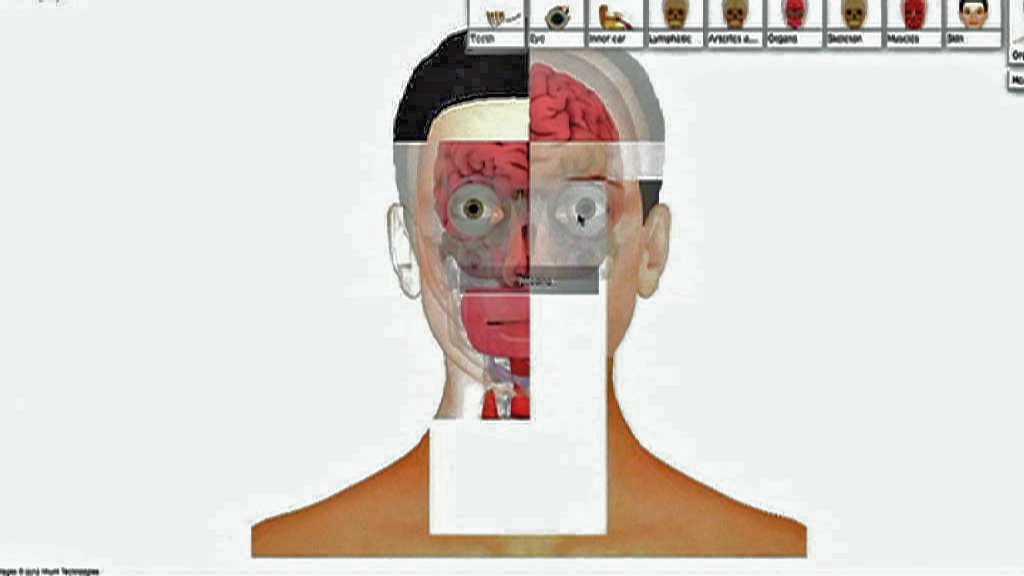Digital patient data – good idea, hard sell

The electronic patient record is one of the most ambitious information technology projects of our time. Despite promises of better safety and care, its speedy introduction has been slowed down by concerns about data protection.
The idea is attractive: authorised health professionals such as physicians, pharmacists, insurers and health authorities, as well as the patients themselves, would be able to access medical reports, images and prescriptions around the clock.
The system is set to improve treatment by speeding up diagnosis, preventing unnecessary examinations and multiple prescriptions. An impact analysis showed that everybody would benefit, although the flow-through benefits to doctors would take longer because a majority of them still do not have the necessary equipment.
The first hurdle is the storage of comprehensive information.
Data, data, data
“At modern clinics we’re talking about as much as 20 terabytes of data volume per patient,” Rene Fitterer from software maker SAP recently told participants at the Swiss eHealth Summit. “Today, there is a real information overload with unstructured, non-standardised data such as images, video and text.”
Software providers and telecom companies such as Swisscom consider information and communication technology (ICT) their home turf, but smaller companies have started setting their sights on the attractive market too.
“The term e-health really triggers a gold-rush feeling among ICT specialists,” Felix Wiegandt, a consultant at IT company Osun, told swissinfo.ch. “It’s big business, that’s why every player in the field is trying to get a piece of the cake.”
Swisscom already offers Swiss residents an electronic healthcare file through its Evita platform. According to a company-commissioned survey, as many as 72 per cent of respondents are in favour of electronic data exchange.
Assuring confidentiality
It is still unclear, however, where the information would be stored and who should get access to which data. Once those not-so-minor issues are resolved, patients need to be assured that everything is done to comply with medical confidentiality and reduce the risk of data abuse.
Patients confide in their doctors, entrusting them with sensitive health information that in the wrong hands may become economically or socially detrimental to them or their families.
“The trust between patient and physician is central to a successful and efficient treatment,” the Swiss Medical Association wrote in a comment about the electronic patient record. “A removal of this bond of trust may lead to unnecessary or even dangerous examinations or treatments.”
The government is keen to find a widely acceptable solution. The health ministry currently has the unenviable task of sifting through almost 100 submissions received from regional governments and interest groups during the legislative consultation process.
The main issues are incentives for doctors and the use of the social security number as identification, according to Salome von Greyerz, head of health strategies at the Federal Health Office.
The current proposal’s rewarding features are that patients have access to their data and the right of self-determination. The patients may decide which data will be accessible to whom and can revoke their consent at any time.
“The information flows will be encrypted, and the patient is sovereign,” von Greyerz told swissinfo.ch. “Also, there will not be any central storage location; the data will remain decentralised where it is generated, be it at the hospital, at the physician’s or at the laboratory.”
Costs and benefits
The system has obvious, and even life-saving, advantages. Electronic records are a good option for parents, who could access their children’s information, or for people suffering from chronic conditions such as heart disease or diabetes, particularly when they travel abroad, said Hansjörg Looser, head of eHealth for canton St Gallen.
“It would, for example, be a natural continuation of all those vaccination booklets the government is paying for,” Looser said. “I don’t really see why the government should pay for inefficient paper.”
Based on model calculations for the 20 years through 2031, analysts at economic consultancies Empirica and Ecoplan forecast a cumulative net benefit of about SFr3.5 billion ($3.8 billion) for the electronic record. So it could save some SFr176 million per year, or about 0.3 per cent of public health costs, according to the researchers.
“This average value does not take into account that the annual net benefit will increase over time because the investment costs are disproportionately high during the first few years,” Eliane Kraft from Ecoplan told swissinfo.ch.
The actual financial costs are estimated at SFr1.6 billion over 20 years. Including intangible costs such as a value for the time spent accessing the data, costs could amount to about SFr4.1 billion, the researchers calculated.
They expect chronic patients to benefit immediately, while healthy people would see benefits later. Hospitals would recoup their investments about three to four years after introduction, while for pharmacies the costs would exceed the benefits for a longer time, according to the report commissioned by the health office and the State Secretariat for Economic Affairs (Seco).
This leaves the question whether patients are really ready for digital health data.
For 43-year-old Anneliese Elmer the electronic patient record is, however you look at it, a winner. Processes are more efficient and less time-consuming if health information is compactly stored and accessible at the pharmacy, the general practitioner’s, or the specialist’s, particularly in view of the abundance of data, Elmer said.
“I understand concerns about virtual health data, but I’m all in favour of it, if access is regulated and if information may be individually customised,” Elmer explained. “Even my 93-old grandmother would do it – although she may have to ask her doctor to input the data for her.”
As part of its e-health strategy, the government asked the Federal Public Health Office on December 3, 2010 to work out a legal framework for the introduction, distribution and promotion of the electronic patient record.
In the consultation process, three quarters of the almost 100 participants said they were in favour of the preliminary draft for the law on the electronic patient record. A quarter agreed in principle but requested that certain points would be revised.
Discussions about financial incentives for doctors and alternatives to the 13-digit social security number for patient identification have slowed down the approval process. Health minister Alain Berset said on September 19 that a proposal for the new law is expected by the middle of 2013.
The House of Representatives on September 20 urged the government to speed up the introduction of financial incentives for physicians to promote electronic records.
In addition to start-up financing, the government should create an incentive system for doctors who document and exchange patient data electronically. A majority of medical practices is reluctant to introduce electronic records because of concern about high investment and operating costs.

In compliance with the JTI standards
More: SWI swissinfo.ch certified by the Journalism Trust Initiative




You can find an overview of ongoing debates with our journalists here. Please join us!
If you want to start a conversation about a topic raised in this article or want to report factual errors, email us at english@swissinfo.ch.